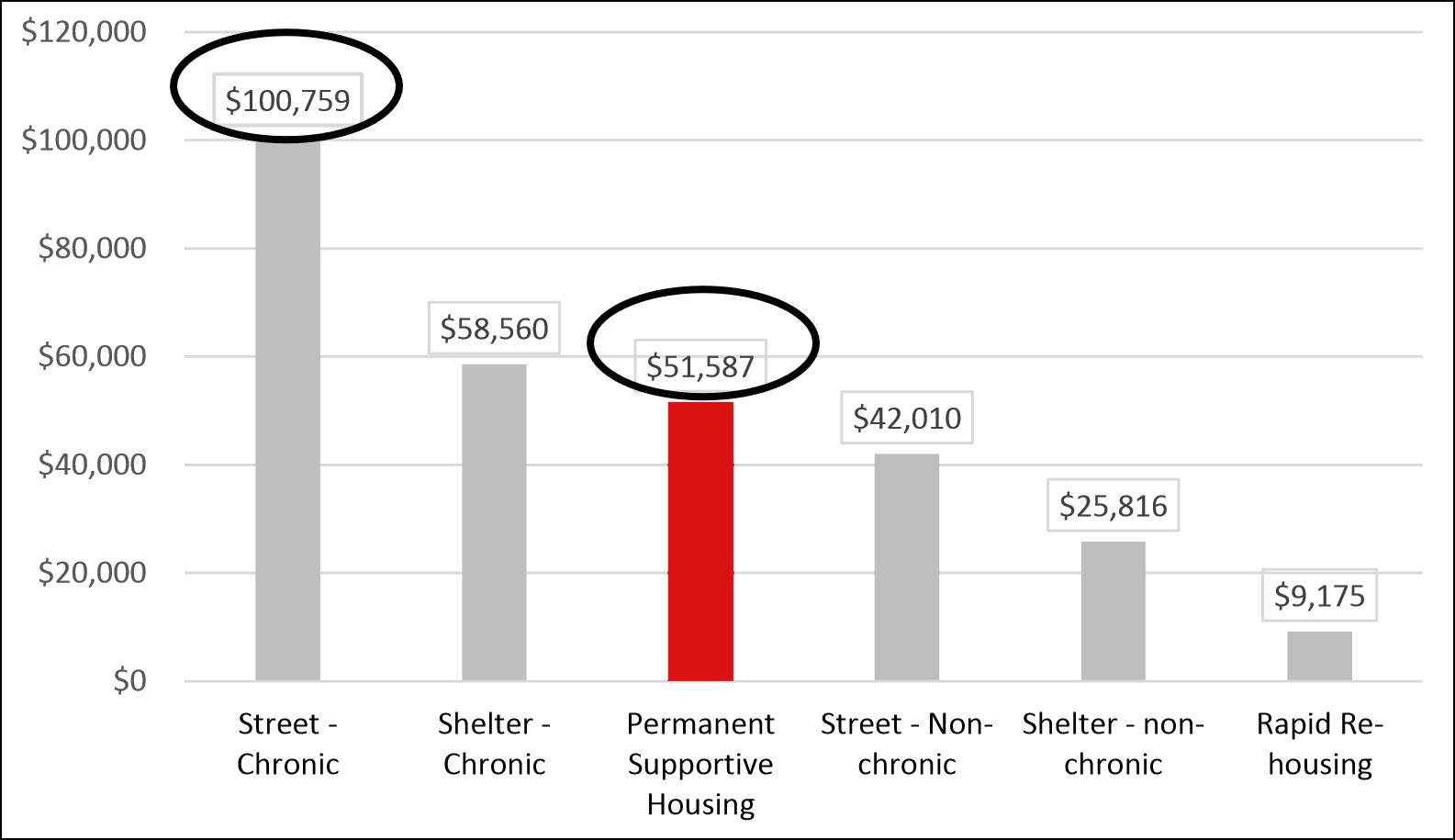After I posted some pictures of the homeless in Los Angeles yesterday, a reader pointed me closer to home: the latest Grand Jury report about homelessness here in Orange County. It was published a few weeks ago, and like previous reports it points out that:
- OC’s homeless population is relatively small: fewer than 3,000 people, which makes it eminently manageable.
- Studies routinely find that it’s cheaper to provide decent housing and health care for the homeless than to leave them on the street:

- The best solution is Permanent Supportive Housing, which works better than most people realize. This typically takes the form of small clusters of apartments managed by caseworkers.
So what’s the problem? The usual:
Of all the issues identified as roadblocks to siting PSH within Orange County cities, one of the most challenging is resident opposition to placing any type of housing for the homeless within their neighborhoods….Cities report their residents appear resistant to any type of housing that accommodates the homeless near them. This resistance is primarily due to public safety fears, though concerns of negative impact on housing values were also voiced.
While the Grand Jury could find no specific studies detailing crime statistics in areas within OC with PSH, information gathered from other areas of the country suggests that there is little evidence of an appreciable increase in crime. This may be due to the stabilizing effect afforded by living in a house, as well as the presence of housing support staff who can check on residents or call to report suspicious activity. Studies indicated that housing values in the areas of PSH had remained stable, or had even risen.
NIMBYism certainly isn’t unique to Orange County. In November 2013, the Central Florida Regional Commission on Homelessness published the results of a nationwide survey on best practices in addressing homelessness, and a major best-practice theme was dealing with resident resistance to siting housing for the homeless. One of the most frequently mentioned recommendations specified that no program succeeded without educating the community about homelessness and gaining its investment in the solution.
This is Job 1. One way or another, you have to get community buy-in or else you’ll never succeed. This requires education about the homeless, of course, but it also requires compromise. That’s a tough nut for some people, who are frustrated that a bunch of privileged middle-class folks are being wilfully ignorant and obstructive, but it’s reality. This is a situation where letting the good be the enemy of the perfect is a recipe for endless failure.

















